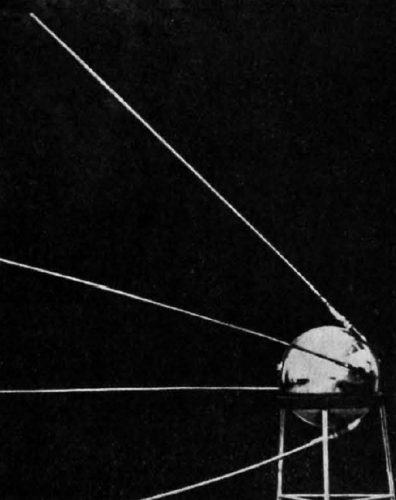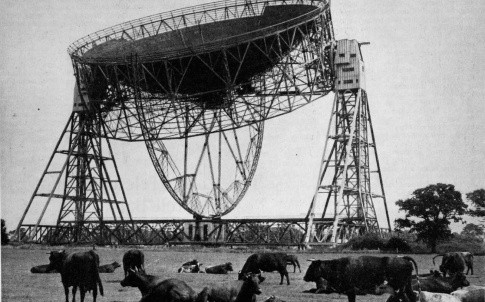It was, of course, referring to Sputnik 1, the world’s first artificial satellite, which was launched into low earth orbit on October 4th 1957.

The launch marked a key moment in the history of the 20th Century. There was considerable international surprise that the Russians had beaten the US to orbit, and the resulting fear of Soviet technological supremacy was the catalyst for a fevered race that accelerated the development of space technology and was also one of the defining trends of cold war rivalry between the US and Russia. The so-called "space race" peaked in 1969, when the US Apollo 11 mission put the first men on the moon.
Despite the political shockwaves, The Engineer was fulsome in its praise for the project. “Congratulations are unquestionably due to Russia’s scientists and engineers,” it wrote. “A major scientific feat has been performed.”
Although it was early days, The Engineer gleaned what technical details it could from the Russian newspaper Pravda, reporting that the satellite was a sphere, around 58 cm in diameter and made of aluminium alloy. Commenting on its payload, the report noted that “The casing houses two radio transmitters and other equipment in an atmosphere of nitrogen gas, the whole assembly weighing 83.6 kg. Four metal antennae are attached to the casing: 2.4m to 2.9m long, these rods folded back when the sphere was on its outward journey.”
The signals from these antennae were monitored from Earth for the next 21 days until the transmitter batteries ran out. The satellite burned up on 4th January 1958 when re-entering Earth’s atmosphere.
READ OUR ARCHIVE COVERAGE OF THE SPUTNIK LAUNCH
Despite its praise for the project, The Engineer does acknowledge the unsettling geopolitical implications of the achievement. “It has now been made obvious that Russian engineers are ahead of their American counterparts in the design of rockets,” it commented. “There is, indeed, menacing evidence in the setting up of the satellite that the Russian claim to have developed a successful inter-continental ballistic missile is true. It may well be, indeed, that elements of international politics have entered into the timing of the firing of this first satellite rocket.”
The reporter also expressed regret that such advances were being driven by competition rather than collaboration: “How unfortunate it is that it is almost impossible to conceive of American instruments being installed in a Russian-fired satellite! For surely in advancing into outer space the nations should act in unity rather than in a spirit of hostile competition.”

As reported elsewhere in The Engineer, the launch of Sputnik also proved to be a key moment for Bernard Lovell’s Jodrell Bank radio-telescope.
Until that point, the telescope had been a controversial project. Many astronomers were sceptical about the technology, whilst cost overruns and delays to the project had led to considerable negative media coverage. However, on 11th September, although the facility wasn’t even fully up and running, Lovell’s team managed to use the telescope to track Sputnik’s launch rocket.
It was the only facility in the West capable of doing this and, as Sir Bernard told The Engineer in a rare interview back in 2006, attitudes to the project changed almost overnight. "I remember at 1am in a crowded lecture room showing them a slide of the echo, I said 'this is what no man has yet seen- a wonderful echo of the carrier rocket moving over the lake district', they knew that this was the echo from what could have been a ballistic missile so then things began to turn in our favour.”





Glasgow trial explores AR cues for autonomous road safety
They've ploughed into a few vulnerable road users in the past. Making that less likely will make it spectacularly easy to stop the traffic for...